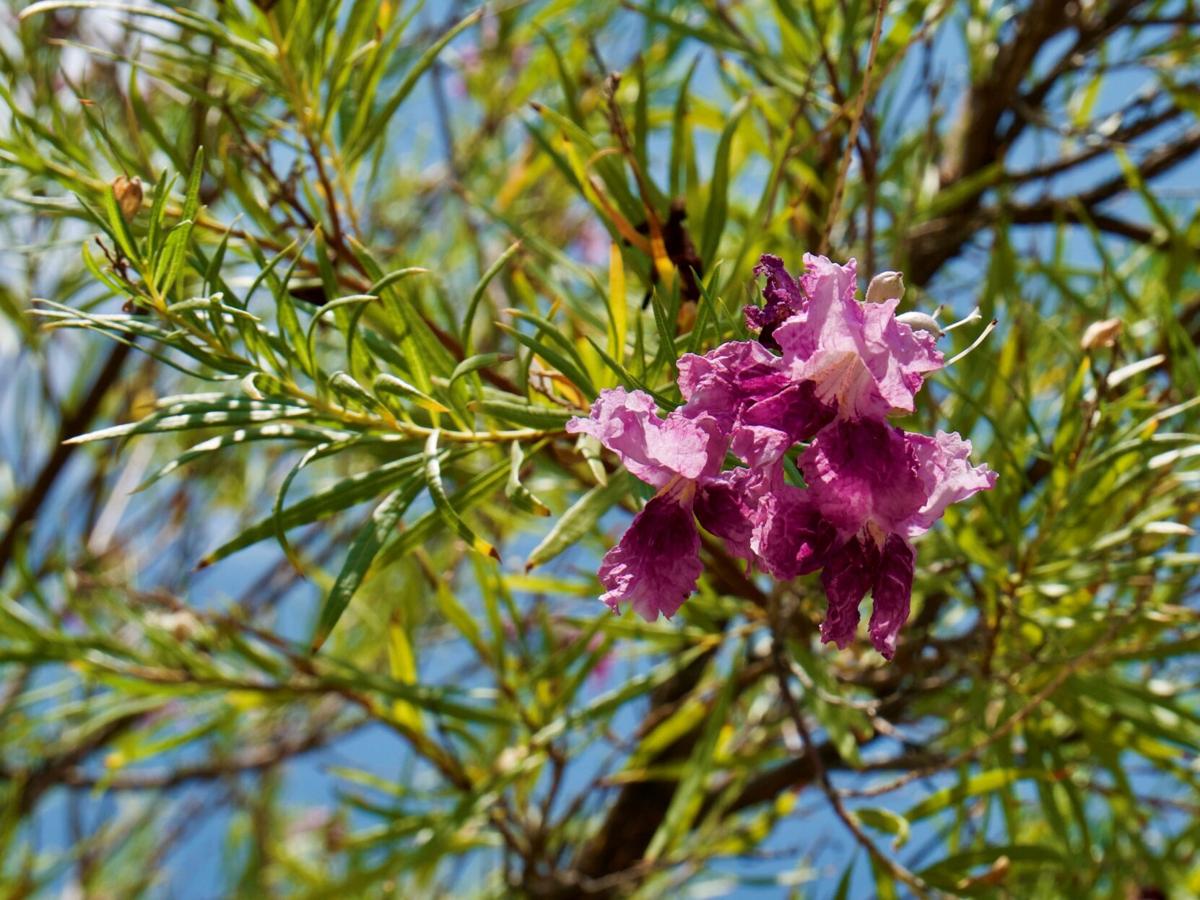For ease of care; drought and sun tolerance; and showy, fragrant tropical flowers it’s hard to beat the desert willow (Chilopsis linearis). This small native tree grows in or near seasonal creeks in the desert Southwest. It is not a true willow, but in fact related to plants in the trumpet creeper family (Bignoniaceae) which also includes Tecoma stans (Arizona yellow bells). Its closest relatives are the Catalpa tree genus.
Desert willows usually have light purple flowers, but cultivars can be found in colors from white to dark purple. The trees naturally grow in a bush-like form with several small trunks, but they can be pruned to a more tree-like form. The trees lose their leaves in the winter, making them ideal shade trees for areas near the house where you may want the warmth of the winter sun. The leaves are narrow and have a lush green color. The bark is light grey on young trees and becomes grey and brown with vertical oval features as it gets older. Eventually it can get rough-textured.
Desert willows do produce some litter due to being deciduous but during the summer they are relatively litter-free. They are also thornless, making them good trees for high-traffic areas and pools. The flowers eventually create bean-like seed pods which stay on the tree through the winter. There are horticultural varieties available which do not produce the seed pods.
The desert willow is very drought-tolerant once established, but it blooms best with summer rains or if watered regularly and allowed to dry out between waterings. In the wild it is usually about 15-20 feet tall, but I have seen it grow to 30-40 feet in well-tended gardens. Overwatering and fertilizing will increase growth rate, but the tree won’t be as sturdy.
The trumpet-shaped flowers provide nectar for hummingbirds, carpenter bees, butterflies, and other pollinators, while their dense foliage and shrub-like growing habitat provide shelter and nesting sites for many birds. The seeds may be eaten by goldfinches and doves, and are used as nesting material by hummingbirds. They are larval hosts for the white-winged moth.
Desert willows are hardy to 10 F and are tolerant of almost any well-drained soils. They do well in both partial shade and full sun and even tolerate reflected heat. They are very fast-growing when watered regularly, and can grow 2-3 feet in a year. The roots are not invasive, so they are great trees for planting near structures such as walls, patios, and driveways.
Flowers begin with warm spring weather in April and usually last through September but this varies with rainfall. Desert willows flower on new growth, so a bit of pruning in early spring while they are dormant will result in lots of flowers in the new season. You can also remove dead flowers and seed pods to encourage more blooms.
You can grow your own desert willows by collecting fresh seed pods and planting the seeds in seed-starting mix. The plant can also be propagated from semi-hardwood cuttings using the same mix. Small trees should be protected from deer and rabbit foraging.
Desert willows can be purchased locally at various locations including:
Pros
- Drought tolerant
- Tolerant of reflected heat and sun
- Roots are not invasive
- Beautiful flowers in a variety of colors
- Provide food and habitat for hummingbirds, insect pollinators, and other birds
- Cold hardy and recover quickly from frost damage
- Don’t need water during dormant season
Cons
- Litter in the winter
- Looks best with supplemental watering
For more information on the desert willow, check out the USDA plant guide.





